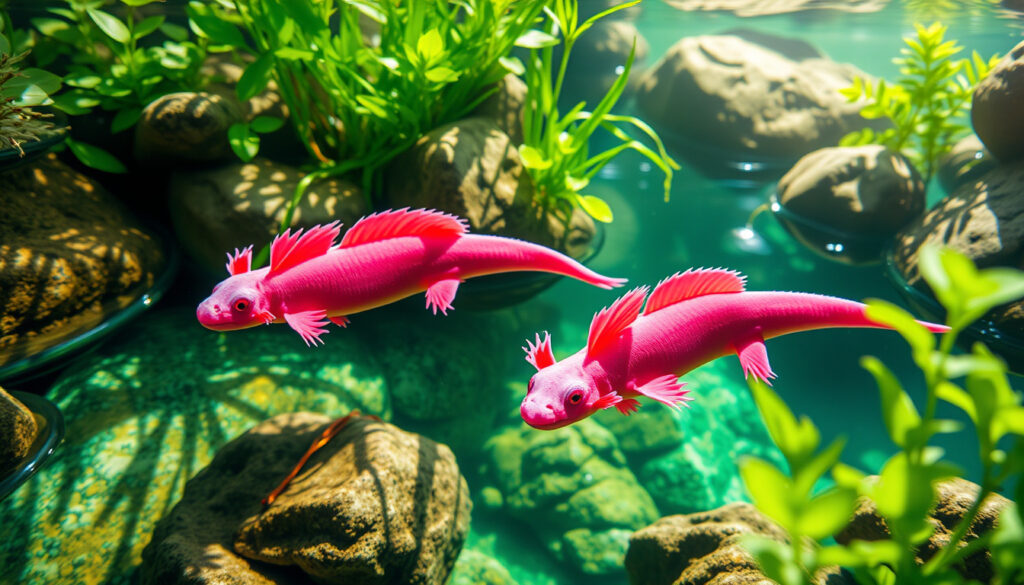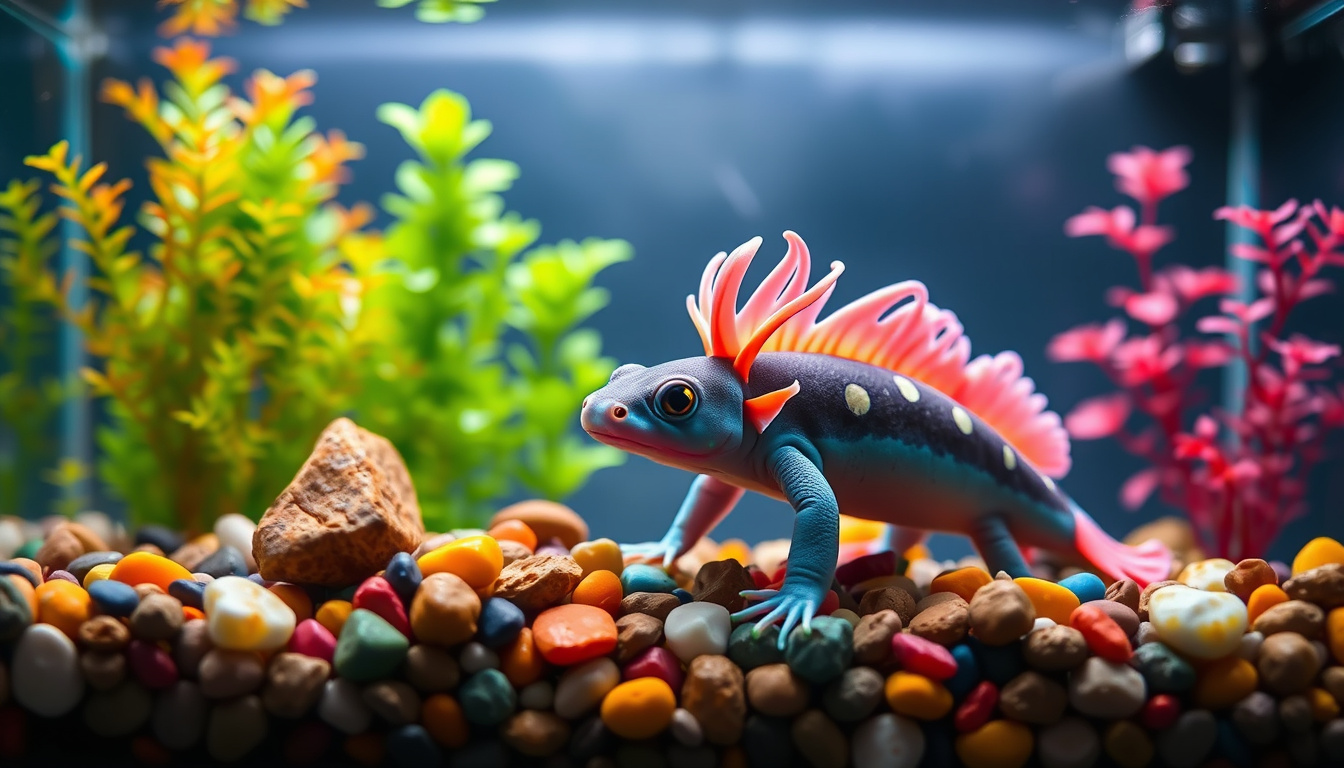Are you enchanted by the unique appearance and captivating personality of axolotls?
These aquatic creatures have taken the pet world by storm thanks to their whimsical looks and friendly nature.
In this simple easy guide to axolotl care, we will explore everything you need to know to ensure that your fluffy-faced friend not only survives but thrives in its habitat.
Whether you’re a seasoned pet owner or a newcomer to the world of exotic pets, this guide will equip you with the essentials for creating a happy and healthy environment for your axolotl.
The TL;DR
- Axolotls require a specialized habitat with a temperature range of 60-68°F and plenty of hiding spots.
- Feeding your axolotl a varied diet of high-quality pellets, worms, and occasional treats is crucial for their health.
- Maintaining optimal water quality through regular testing and filtration is essential to prevent stress and disease in axolotls.
- Be aware of common health issues like infections and skin problems, and take preventive measures through proper care.
- Socialization and enriching the axolotl’s environment with suitable decorations can enhance their well-being and reduce stress.
Understanding Axolotls: A Brief Overview
Axolotls are fascinating aquatic creatures that have captured the hearts of many young enthusiasts!
Known for their unique appearance and remarkable ability to regenerate limbs, these amphibians are a popular choice for pet owners looking to venture into exotic pet care.
When it comes to axolotl care, it’s essential to create a suitable environment that mimics their natural habitat in the waters of Lake Xochimilco in Mexico.
This means providing a spacious aquarium with cool, clean water, as axolotls thrive in temperatures around 60 to 64 degrees Fahrenheit.
Additionally, a well-filtered tank free from strong currents allows them to swim and explore comfortably.
These adorable creatures have a diet primarily consisting of worms, pellets, and other protein-rich foods, so understanding their nutritional needs is equally vital.
By learning about the right conditions, diet, and care practices, you can ensure your axolotls live healthy and vibrant lives, making your journey into pet ownership both exciting and rewarding!
Setting Up the Perfect Habitat for Your Axolotl
If you’re considering adding an axolotl to your life, setting up the perfect habitat is crucial for effective axolotl care.
These unique aquatic creatures thrive in a well-balanced environment that mimics their natural habitat.
Start with a spacious aquarium, ideally 20 gallons or more, to accommodate their adult size.
The water temperature should be kept between 60 to 68 degrees Fahrenheit, reflecting their native chilly waters in Mexico.
Use a canister filter for efficient water circulation, but ensure it has a gentle flow, as axolotls prefer calm waters.
Substrate plays an essential role, too; opt for sand or smooth gravel to prevent accidental ingestion.
Adding ornaments like live plants or hiding spots can offer your axolotl a chance to explore and feel secure.
Regular water quality checks are vital, so invest in a good water testing kit to ensure ammonia, nitrite, and nitrate levels remain safe.
With the right setup, your axolotl can thrive, showcasing its fascinating behaviors and vibrant colors in a stable environment.
‘The best way to care for your pet is to understand its needs and create an environment where it can thrive.’
Nutrition Essentials: Feeding Your Axolotl
When it comes to axolotl care, one of the most vital aspects to consider is their nutrition.
Axolotls are unique aquatic creatures that require a specific diet to thrive.
In their natural habitat, they feast on worms, small fish, and other invertebrates.
As pet owners, it’s essential to replicate this diet to ensure your axolotl remains healthy and vibrant.
High-quality pellets designed for carnivorous amphibians are a great staple, but don’t shy away from offering live or frozen food like bloodworms or brine shrimp as treats.
These options not only mimic their natural feeding habits but also stimulate their hunting instincts, which is a great form of enrichment.
Remember, overfeeding can lead to health issues, so aim for small amounts once or twice a day, adjusting as necessary based on your axolotl’s growth and activity level.
Understanding the right nutrition essentials is key to effective axolotl care and will lead to a happier and longer life for your aquatic friend.

Maintaining Water Quality for Healthy Axolotls
When it comes to axolotl care, maintaining water quality is not just important; it’s essential for the health and well-being of these fascinating aquatic creatures.
Axolotls are sensitive to their environment, and poor water conditions can lead to stress, illness, and even death.
To ensure your axolotl thrives, you should regularly test the water for key parameters such as pH, ammonia, nitrite, and nitrate levels.
Ideally, the pH should be kept between
6.5 and
8.0, while ammonia and nitrite levels should remain at zero.
Additionally, maintaining a stable temperature between 60°F and 64°F is crucial.
Investing in a good filtration system will help reduce harmful toxins, while regular water changes—about 20-25% weekly—will aid in keeping your aquarium clean.
Remember, ensuring high water quality is a vital part of axolotl care that will keep your aquatic friend happy and healthy!
Common Health Issues and How to Prevent Them
When it comes to axolotl care, understanding common health issues is crucial for ensuring your aquatic friend lives a long and happy life.
One of the most frequent problems axolotls face is gill deterioration, often caused by poor water quality.
Regularly testing your tank for ammonia, nitrites, and pH levels can help prevent these issues.
Additionally, axolotls are susceptible to infections and fungal diseases, particularly if they are stressed or injured.
To prevent these, maintain a clean tank environment, provide a proper diet, and ensure they have plenty of hiding spots to reduce stress.
By monitoring your axolotl’s health and taking proactive measures, you can keep these unique creatures thriving in your care.
Frequently Asked Questions
What are the basic requirements for setting up an axolotl habitat?
An ideal axolotl habitat includes a spacious aquarium (at least 20 gallons for one axolotl), a dechlorinator for the water, a filter to maintain water quality, substrate like sand or bare bottom, hiding spots such as caves or plants, and a stable temperature range of 60-68°F.
What should I feed my axolotl?
Axolotls are carnivorous and thrive on a diet of live or frozen foods including earthworms, bloodworms, brine shrimp, and high-quality pellets specifically designed for carnivorous amphibians.
How can I ensure my axolotl’s water quality remains optimal?
Regular water changes (about 20% weekly), monitoring parameters like pH (6.5-7.5), ammonia, nitrite, and nitrate levels, and using a good filtration system are key in maintaining water quality for healthy axolotls.
What are some common health issues that axolotls face?
Common health issues in axolotls include fungal infections, bacterial infections, and problems like gill rot or impaction.
Maintaining good water quality, a nutritious diet, and observing for any behavioral changes can help prevent these issues.
Do axolotls need social interaction and enrichment?
While axolotls are generally solitary creatures, they can benefit from a well-structured environment with hiding places and decorations.
It’s important to avoid overcrowding, as it can stress them out.
Ensure they have areas to explore and hide to keep them happy.

